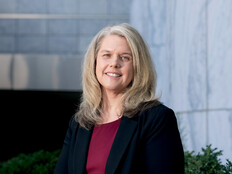Hybrid Work Provided Health Systems with Unforeseen Benefits
Working through the pandemic, the hospital decided it wanted to set up its workforce for remote work more permanently, but it had to overcome some hurdles to get there. There were the common IT challenges such as hardware, connectivity and security. But there were other difficulties, including more competitive recruiting and hiring.
“Unfortunately, as a not-for-profit pediatric hospital, I might offer you a great working environment or a good mission, but I can’t offer you RVUs [relative value units] that you can cash in for,” Chaudry explained. “So, we looked at this and said: Well, first, we’ve got to use that to open up the ability to hire in other markets. So, we moved from just hiring in Washington. We now hire in Washington, Alaska, Montana, Idaho, Texas, Georgia and Florida, and will soon be opening up to all 50 states.”
EXPLORE: 3 questions to ask when re-evaluating healthcare’s remote work strategies.
Another challenge in setting up any remote workforce is equipping a team to perform its work effectively. Chaudry explained how Children’s met the needs of its employees who were no longer working in the hospital facilities. “We built an app store where you could order your tech kit. You get $500 toward a fancy chair or a new table, and you can order the two items and other peripherals on that website. And we will have a negotiated price that you could apply your $500 grant to, and then everything will be shipped to your house.”
The hospital also reaped some unexpected benefits from real estate decisions made possible because of large-scale remote work. According to Chaudry, the hospital shut down multiple office buildings in downtown Seattle, which has saved the average employee approximately $8,000 in commuting costs, while the organization is projected to realize cost savings of $100 million over 10 years.
Acknowledging Hidden Consequences of Hybrid Work in Healthcare
Chaudry said there have been many positives from remote work, but there have been negative side effects too, pointing out that mental health is a genuine concern. Many conversations have focused on the challenges of working parents who struggle to balance time with children learning from home. But Chaudry said the hospital also wanted to focus on the mental health of employees dealing with isolation in new ways. “What people don’t talk about is mental health issues of their employees while they are isolated at home,” he said.
“If we’ve got young people working in IT, they live by themselves and live in a studio apartment, they never leave the studio apartment. They were already introverted,” he explained. “I’ve seen in the last 18 months or so that pressure. I’ve seen people reach a boiling point because there’s no human-to-human contact. And that’s been harder to manage.”












